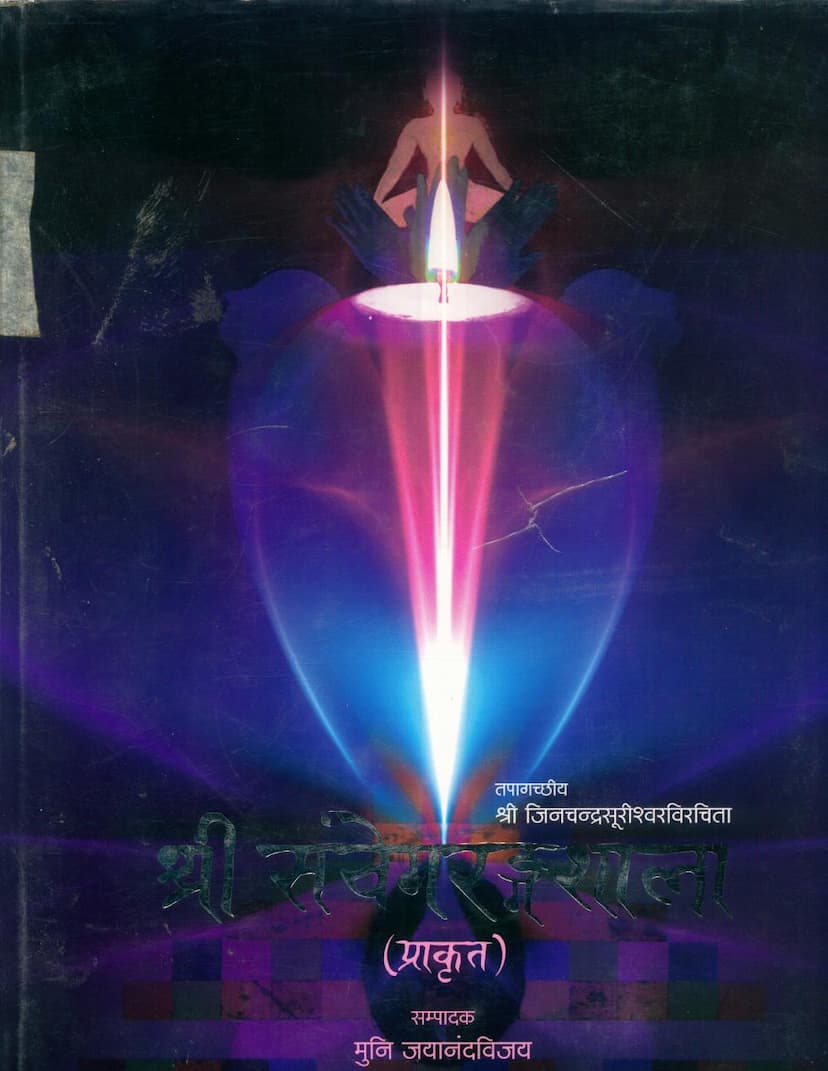Samveg Rangshala
Added to library: September 2, 2025

Summary
Here is a comprehensive summary of the Jain text "Samveg Rangshala" by Jayanandvijay, based on the provided pages:
Book Title: Samveg Rangshala Author(s): Jayanandvijay (Editor), Virachita by Shri Jinachandrasurishwarji (Original Author) Publisher: Lehar Kundan Group Catalog Link: https://jainqq.org/explore/002420/1
Overall Theme: The book "Samveg Rangshala" (literally "The Pavilion of Compulsion/Detachment") is a profound Jain text focused on the concept of samveg. As explained in the introduction, samveg is understood as a combination of fear of worldly existence (bhava-sansar ka bhaya) and aspiration for liberation (moksha ki abhilasha). The text posits that fear of the cycle of birth and death is essential for eradicating worldly attachments, and the aspiration for liberation awakens one's inner spiritual strength. The book emphasizes that these principles are woven into the fabric of daily Jain practices, particularly in prayers like "Bhavanirvedo" (disgust for worldly life) and the desire for the cessation of suffering and karma (dukkha-kkhaya and karma-kkhaya).
Original Author and Historical Context: The original text, "Samvegrangshala," was authored by Shri Jinachandrasurishwarji, who was the elder brother of the renowned commentator Shri Abhaydevsurisurishwarji, the author of the Navangi commentary. This indicates the text is rooted in the rich tradition of Jain Agam literature and its exegesis. The text itself is stated to have been composed in Vikram Samvat 1125 (approximately 1068 AD).
Publisher and Editor: The text has been published by Lehar Kundan Group. The editor, Muni Jayanandvijay, has diligently compiled and presented this work, aiming to correct previous inaccuracies and bring the complete text to light. The publication also acknowledges the support of various individuals and families, particularly the Lehar Kundan Group and the Balgota family, who contributed to the printing of 200 copies.
Key Concepts and Structure: The book delves into the practical aspects of achieving samveg through a structured approach, presented in four main sections or dwaras:
-
Parikarmavidhi Dwar (The Gateway of Preliminary Purification): This section, comprising 15 sub-chapters (petadwaras), focuses on spiritually preparing the soul. It covers topics like:
- Arh Dwar: Who is eligible for proper spiritual practice.
- Linga Dwar: Describing the appropriate attire and conduct for monks and lay followers.
- Shiksha Dwar: The importance of learning and practicing spiritual teachings, including grahan-shiksha (learning) and asevan-shiksha (application).
- Vinay Dwar: The crucial role of humility and respect in spiritual progress, referencing the Vinaya Adhyayana of Uttaradhyayan Sutra.
- Other sub-chapters address concentration (samadhi), mind control (manonushasti), irregular wandering (aniyatavihar), royal conduct (raj dwar), consequences (parinam), renunciation (tyag), various types of death (maran vibhaktik), the significance of learned death (pandit maran), the path of virtue (shreni), and controlling desires (bavalal), and the final ritual of self-immolation (sanlekhana).
-
Paragansankraman Dwar (The Gateway of Transition to the Pure Realm): This section has 10 sub-chapters that likely focus on the process of transitioning towards spiritual purity, including aspects like instructions (anushasti), acceptance (pratipatti), remembrance (saran), protection (kavach), equanimity (samata), meditation (dhyan), spiritual states (leshya), results (phal), and departure (vijhan).
-
Mamattva-ucchhed Dwar (The Gateway of Eradicating Attachment): This section, with 9 sub-chapters, addresses the deep-seated nature of possessiveness and how to overcome it. It includes chapters on:
- Alochana Vidhan: The ritual of confession and repentance for sins.
- Shayya: Principles related to bedding and resting places.
- Santhara: The practice of voluntary fasting unto death.
- Other sub-chapters likely deal with aspects of self-control and detachment.
-
Samadhilabh Dwar (The Gateway of Attaining Equanimity/Concentration): This section, with 9 sub-chapters, guides the aspirant towards achieving inner peace and spiritual absorption, likely covering practices related to meditation and the culmination of spiritual realization.
Content and Katha (Narratives): The book is rich in illustrative narratives (kathas) that explain complex spiritual concepts. The editor, Jayanandvijay, notes that the stories in this version sometimes differ in detail from those found in other traditional texts. Examples of these variations include:
- The story of Vankachool, where war and disease are mentioned.
- In other narratives, disease is attributed to drinking water offered by a crow.
- The story of Queen Rani's interaction with the king regarding alleged rape.
- The detail of Acharya Mahagiri's stay at Upkoshā's house (instead of Koshā's).
- The absence of the description of Acharya Mahagiri and Acharya Suhasti's separation in cohabitation (sambhogikpana) compared to other texts.
- The story of Arnika’s son lacking the description of being thrown into a river and then rescued, or the contemplation of dropped blood.
- King Vasu's story lacks the description of the test by the reader.
- Narada's teaching to disciples is not included.
- The story of Bahubali lacks Indra's persuasion of the brothers but includes the description of the Cakra Ratna (wheel-jewel) being obtained and thrown.
- The story of Sthulabhadra mentions three daughters with memory power, while other accounts mention seven sisters.
- The story of Dridhaprahari mentions three murders, whereas other texts mention four.
Purpose and Value: "Samveg Rangshala" is presented as a text that aims to instill, nurture, and cultivate samveg in the soul. It is considered an excellent guide for achieving self-welfare and the welfare of others through its teachings. The book encourages readers to engage in reading, contemplation, and practice of its principles to honor the efforts of the original author.
Editorial Notes: The editor highlights that the text was written in Prakrit and has been compiled with the intention of correcting impurities found in previously published versions. The editor requests readers to inform them of any remaining errors. There's also a philosophical discussion regarding the invocation of the Shrut Devi (goddess of scriptures) and the guru, and the appropriate sequence of veneration.
Overall Significance: "Samveg Rangshala" is a foundational work that delves deeply into the Jain path of detachment from worldly existence and the fervent pursuit of spiritual liberation. Its comprehensive structure, rich narratives, and emphasis on practical application make it a valuable resource for Jain scholars and practitioners seeking to understand and embody samveg.